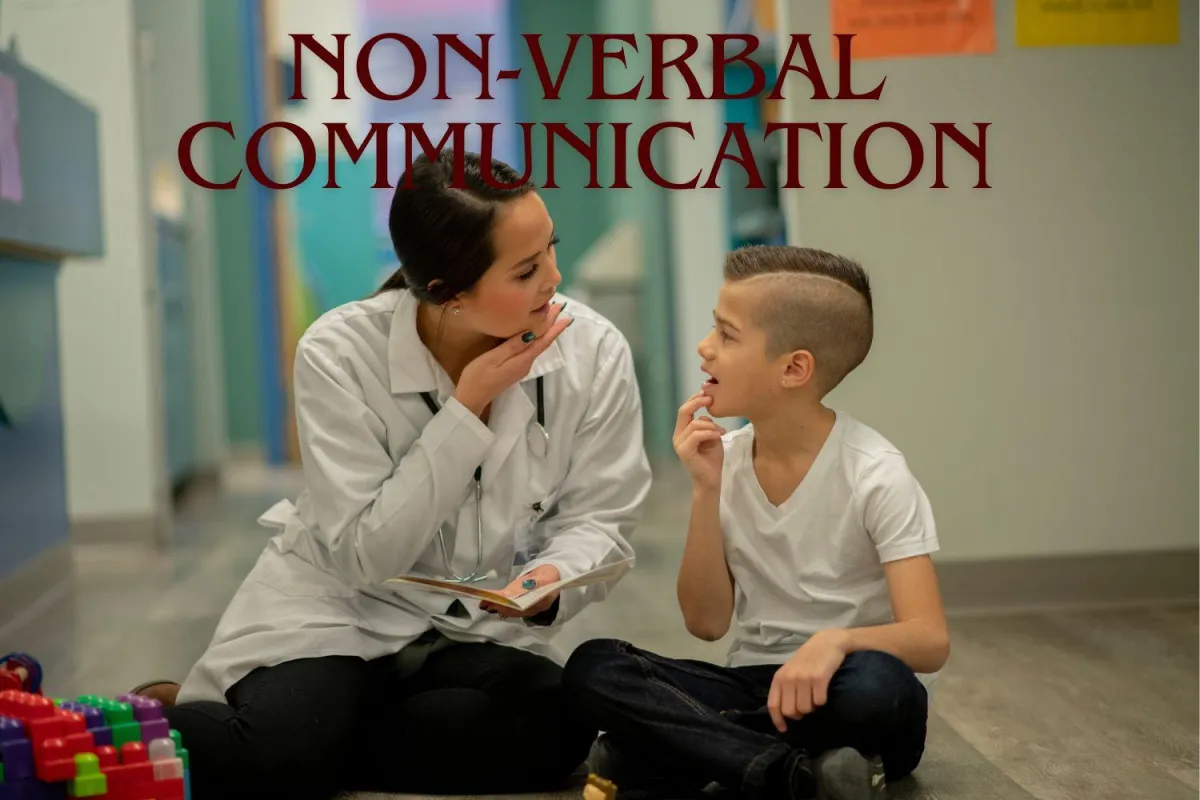
8 Dimensions of Wellness
Blog My Journey
All Dimensions of Wellness

Silent Symphony: Decoding Nonverbal Communication in the Workplace
Introduction
Connect with Amazon Kindle and eBook.
In this chapter, "Nonverbal Communication in the Workplace," we'll learn about body language, which has been studied for years because it's so strong even when people don't say anything. The importance of nonverbal communication comes in its ability to reveal a lot of information and send complex messages, often more effectively than words. When it comes to work, where good communication is key, "how we say it" is more important than "what we say."
This chapter goes into great detail about unconscious communication and shows how it can change the way things work in the workplace. Figuring out what someone is trying to say without them saying it is made easier when you can "read" their body language. The chapter also talks about how to make better nonverbal communication to boost your social skills and get along better with coworkers.
A big part of nonverbal speech is facial expressions, which show how we're feeling. We'll get into the details of reading people's facial expressions, figuring out what feelings they're trying to say, and using this knowledge to have better conversations at work. We'll also talk about the effects of body language, active listening, and spatial zones, which will give you useful tips for improving your professional relationship skills.
Come with us as we learn about the complex language of nonverbal communication. We'll give you useful tips on how to decode, analyze, and use these cues to make the workplace more positive and collaborative. Understanding the meaning of body language, giving full attention, facial emotions, and space is more than just a matter of observing. It's a journey that will change the way you communicate with others at work in a way that is effective and has an impact.
Facial Expressions
Scientists have found that happiness, sadness, anger, hatred or contempt, and surprise are feelings that everyone can understand. These thoughts can help you figure out how someone really feels. Most of the time, we act on how we feel before we think. And the way we look can show how we're feeling.
Why don't you talk about the other feelings? The ones that come out when we talk to other people every day. What about expressions that aren't always as easy to read as general expressions?
· Furrowed eyebrows: concentration or concern
· Eyebrow flash: interest or recognition
· Nose flare: ready for action or engagement
· Tenseness in cheeks or jaw: anger
· Cheek blush: excitement or arousal
Body Language
The way someone walks into a room can tell you a lot about their mood. That's body language, which is conversation without words. If someone walks into a room without making eye contact and then slumps in the corner, they are probably not in a good mood. Without care, communication will probably not be good.
Body language can be broken down into two main groups:
Closed:
When you're closed, your arms and legs are crossed, your body is rounded, and your head is turned down.
Open:
When someone is open, their body is ready to listen and act; their head is up, and their arms are not crossed.
Everyone knows that people who have open body language are seen as happier, more convincing, and easier to talk to. People see people with closed body language as more negative, less willing to work with you, and less skilled.

Giving Full Attention
Paying attention to someone while they talk is another form of nonverbal communication. The way people move can tell you a lot about how much they respect the speaker and how much they value the message. Look the person in the other room in the eyes to let them know you are paying attention. Breaking eye contact can be seen as a sign of disagreement or lack of interest.
Pointing your body at the speaker is another way to show that you are paying attention. Try not to look like you're about to run away. Don't move around. If you tap your foot or finger, it sounds like you are in a hurry, are upset, or are not available right now.
Space
"Spatial zones" are the areas of space between two people where they can be seen. This is also thought of as a nonverbal conversation. The amount of room says a lot about what was said, how the two people feel about each other, and whether they agree or disagree with the subject at hand. Usually, the more power someone has at work, the more personal space they are given. Men who are new friends tend to need more space than women who are new friends.
Everyone needs their own place, but what that means to different people is different. It is often based on how much trust there is. The less trust there is between two people, the farther apart they will be. On the other hand, the more trust there is, the closer they will be to each other. When you invade someone's personal space, you might not be able to talk to them anymore. If you move too close or too early, the person you are trying to talk to might not trust you and feel uncomfortable.
Conclusion
In conclusion, this chapter has unveiled the intricacies of "Nonverbal Communication in the Workplace," emphasizing the pivotal role of body language in professional interactions. As we've talked about the subtleties of body language, giving full attention, and physical zones, it's become clear how important nonverbal cues are to how things work in the workplace. The saying "how we say it" is more important than "what we say" really hits home, showing how important it is to learn nonverbal communication.
Understanding these subtle cues not only helps you figure out feelings and unspoken messages, but it also makes the workplace a better place to communicate and work together. It becomes clear that being able to "read" and send better nonverbal communication is a useful skill that can help people get along better with each other and with their bosses and coworkers.
Readers should have new ideas and useful tips for navigating the complicated world of wordless communication. Adopting these principles will not only improve your social skills, but it will also have a positive effect on your relationships at work. Please join us on this trip as we learn how to use nonverbal communication to create a more connected, communicative, and peaceful work environment.





